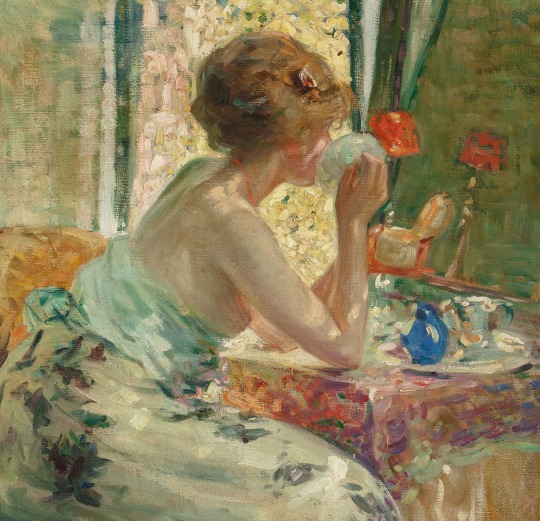#louis ritman
Text

Louis Ritman (American, 1889-1963) - Watering the Garden
281 notes
·
View notes
Text

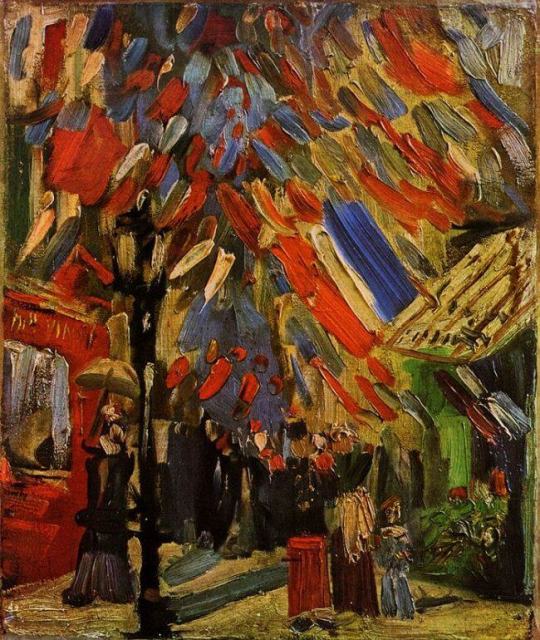






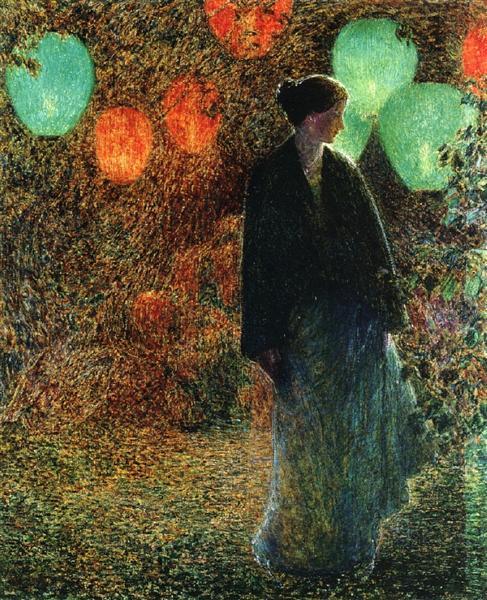

July, my Lost Lover
"Midsummer", d.x.y// Fourteenth of July Celebration in Paris, Vincent Van Gogh// Holler, Allie Ray// 14 July 1905: Night, Dieppe// Burning in the Water Drowning in the Flame, Charles Bukowski// Letters of Rainer Maria Rilke: 1910-1926, Rainer Maria Rilke// A Day in July, Louis Ritman// NW, Zadie Smith//July Night, Childe Hassam// "(July is Over and There is Very Little Trace)", Frank O'Hara//
#web weaving#july#july 2022#poetry#prose#painting#spilled ink#spilled words#words#collage#intertextuality#charles bukowski#vincent van gogh#rainer maria rilke#zadie smith#allie ray#louis ritman#childe hassam#frank o'hara#dieppe#dont tell my friends#months#parallels
2K notes
·
View notes
Text

Louis Ritman (American, 1889-1963) • The Open Window • Unknown date • Private collection
#art#fine art#painting#paintings of interiors#louis ritman#american artist#american impressionism#art history#artist#oil painting#art appreciation#the painted room blog#art blog#artwork#art enthusiast#art nude
67 notes
·
View notes
Photo

Louis Ritman (1889-1963, American) ~ Woman With Watering Can, 1920s
[Source: Christie’s]
292 notes
·
View notes
Text

Louis Ritman
* * *
There shall be eternal summer in the grateful heart.
- Celia Thaxter
[Literature and Art]
38 notes
·
View notes
Text
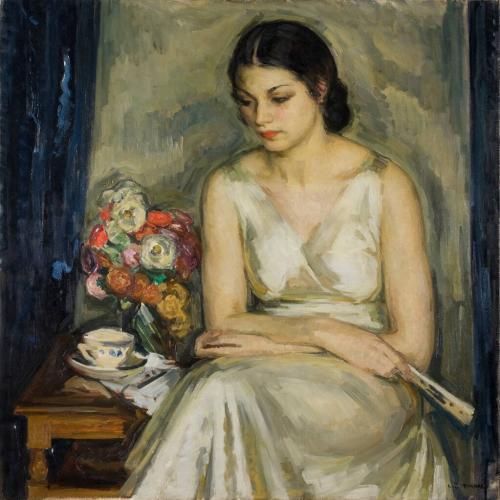
Louis Ritman (American, 1892-1963) • Estelle in White Satin • c. 1930 • Weisman Museum of Art - Indianapolis, Minnesota
#women in white#art#la robe blanche#painting#white dress#women in paintings#portrait#fine art#american impressionism#impressionism#louis ritman#early 20th century painting
34 notes
·
View notes
Text

Louis Ritman (Ukrainian-American, 1889-1963) • Mademoiselle Gaby • Before 1919 • Los Angeles County Museum of Art
#louis ritman#art#painting#fine art#art history#women in paintings#early 20th century art#modernism#modern art#Ukrainian-American artist#american impressionism#impressionist art#impressionism#paintings of women
34 notes
·
View notes
Photo

Louis Ritman (American, 1889-1963), Man and Woman in a Garden. Oil on canvas, 26 x 32 in.
99 notes
·
View notes
Text
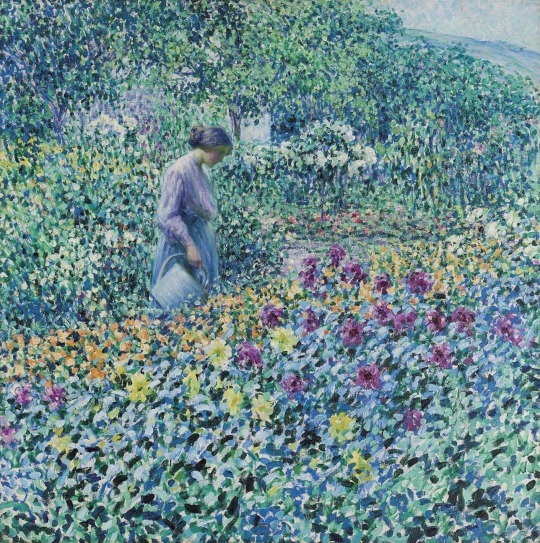
‘Woman With Watering Can’ by Louis Ritman, c. 1920s
#vintage art#flowers#floral#flower painting#classic art#art#vintage#painting#old art#antique#oil painting#art print#fine art#art history#art details#floral art#flower art#impressionism#artist#gardening
54 notes
·
View notes
Text
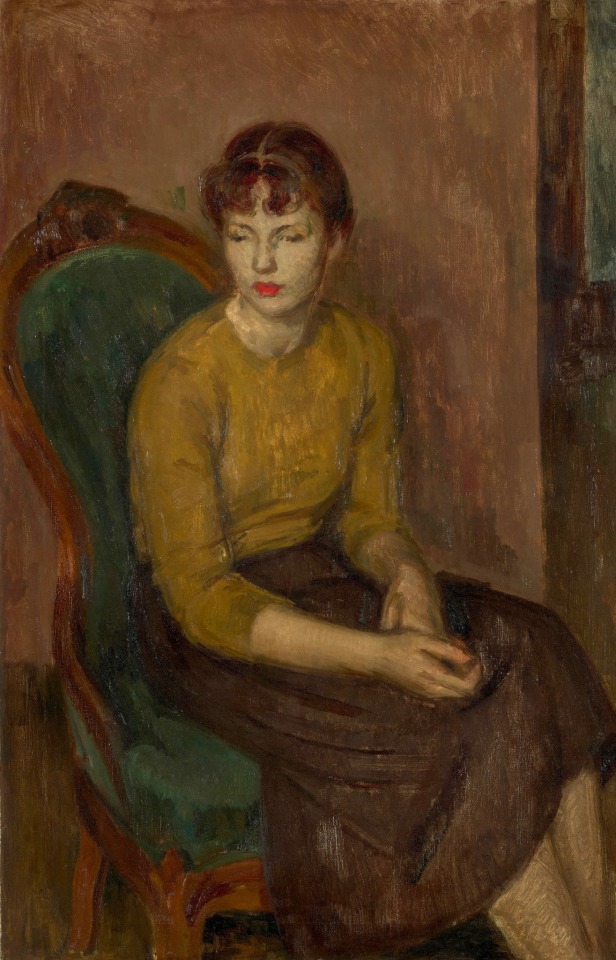
Louis Ritman (1889-1963)
Seated Girl on a Green Chair
oil on canvas
Bonhams
11 notes
·
View notes
Text
ZOHAR AND LILITH:
"References to Lilith in the Zohar include the following:
She roams at night, and goes all about the world and makes sport with men and causes them to emit seed. In every place where a man sleeps alone in a house, she visits him and grabs him and attaches herself to him and has her desire from him, and bears from him.
And she also afflicts him with sickness, and he knows it not, and all this takes place when the moon is on the wane.
This passage may be related to the mention of Lilith in Talmud Shabbath 151b (see above), and also to Talmud Eruvin 18b where nocturnal emissions are connected with the begettal of demons.
According to Rapahel Patai, older sources state clearly that after Lilith's Red Sea sojourn (mentioned also in Louis Ginzberg's Legends of the Jews), she returned to Adam and begat children from him by forcing herself upon him.
Before doing so, she attaches herself to Cain and bears him numerous spirits and demons.
In the Zohar, however, Lilith is said to have succeeded in begetting offspring from Adam even during their short-lived sexual experience.
Lilith leaves Adam in Eden, as she is not a suitable helpmate for him.
Gershom Scholem proposes that the author of the Zohar, Rabbi Moses de Leon, was aware of both the folk tradition of Lilith and another conflicting version, possibly older.
The Zohar adds further that two female spirits instead of one, Lilith and Naamah, desired Adam and seduced him.
The issue of these unions were demons and spirits called "the plagues of humankind", and the usual added explanation was that it was through Adam's own sin that Lilith overcame him against his will.
17th-century Hebrew magical amulets
Medieval Hebrew amulet intended to protect a mother and her child from Lilith (see picture)
A copy of Jean de Pauly's translation of the Zohar in the Ritman Library contains an inserted late 17th century printed Hebrew sheet for use in magical amulets where the prophet Elijah confronts Lilith.
The sheet contains two texts within borders, which are amulets, one for a male ('lazakhar'), the other one for a female ('lanekevah').
The invocations mention Adam, Eve and Lilith, 'Chavah Rishonah' (the first Eve, who is identical with Lilith), also devils or angels:
Sanoy, Sansinoy, Smangeluf, Shmari'el (the guardian) and Hasdi'el (the merciful).
A few lines in Yiddish are followed by the dialogue between the prophet Elijah and Lilith when he met her with her host of demons to kill the mother and take her new-born child ('to drink her blood, suck her bones and eat her flesh'). She tells Elijah that she will lose her power if someone uses her secret names, which she reveals at the end: lilith, abitu, abizu, hakash, avers hikpodu, ayalu, matrota ...
In other amulets, probably informed by The Alphabet of Ben-Sira, she is Adam's first wife. (Yalqut Reubeni, Zohar 1:34b, 3:19
Charles Richardson's dictionary portion of the Encyclopædia Metropolitana appends to his etymological discussion of lullaby "a [manuscript] note written in a copy of Skinner" [i.e. Stephen Skinner's 1671 Etymologicon Linguæ Anglicanæ], which asserts that the word lullaby originates from Lillu abi abi, a Hebrew incantation meaning "Lilith begone" recited by Jewish mothers over an infant's cradle.
Richardson did not endorse the theory and modern lexicographers consider it a false etymology."- Adam van norden

2 notes
·
View notes
Text

Louis Ritman (1889-1963, American) ~ Woman in a Flower Garden, 1914
[Source: philamuseum.org]
19 notes
·
View notes


